Cooking gets a lot easier when you’ve got the right tools in your hand. The truth is, the materials of kitchen utensils can decide how safe, durable, and fun your time at the stove really is.
From stainless steel that lasts for years to silicone that’s gentle on your pans, each choice has its own perks. In this guide, you’ll discover the best material for kitchen utensils, learn which options are safest, and find out what material is best for kitchen cooking utensils so you can cook smarter, not harder.
Why Material Choice Matters for Kitchen Utensils
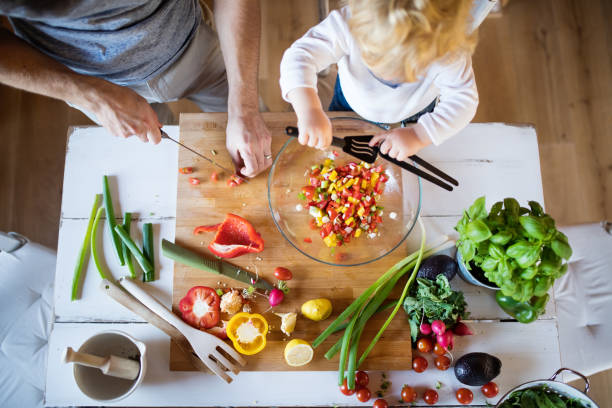
Safety and Hygiene Are Key
Your utensils come into direct contact with food every day. Materials like stainless steel and food-grade silicone are non-porous and resist bacteria buildup. On the other hand, some low-quality plastics or poorly treated woods may harbor germs or even release harmful substances if not properly maintained. Choosing safe, hygienic materials protects users and strengthens trust in your products.
Durability Affects Longevity and Costs
Durable materials like stainless steel or high-quality silicone last for years with minimal maintenance, while softer plastics or untreated wood wear out faster. By understanding durability differences, you can plan inventory, reduce replacements, and provide better value for money to your customers.
Performance Impacts Cooking Experience
The material also affects how utensils interact with cookware. Wooden or silicone tools prevent scratches on non-stick pans, while rigid metals excel in flipping or stirring heavy foods. When you choose the right material for each task, cooking becomes easier and more efficient for anyone using your utensils.
Common Materials Used in Kitchen Utensils
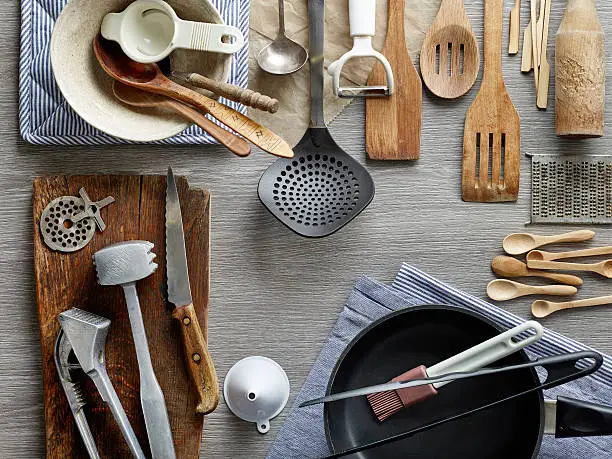
Kitchen utensils are primarily made from five categories of materials: stainless steel, wood, silicone, plastic, and ceramic. Each material offers unique benefits and comes with certain limitations. Let’s examine them individually to help you choose the best option for your kitchen or product line.
Stainless Steel Utensils: Durable and Hygienic Option
Key Strengths
-
Durability: High-grade stainless steel (304 or 18/10) resists rust, corrosion, and acidic reactions.
-
Hygienic: Non-porous surface prevents bacteria buildup and is easy to clean, dishwasher-safe.
-
Long-lasting Appearance: Maintains shine and function even after years of use.
Practical Considerations
-
Heat Conductivity: Handles can become hot; many utensils include silicone or wooden grips for insulation.
-
Weight and Balance: Feels solid and stable in hand, ideal for stirring, flipping, and serving.
Sourcing Tips
-
Cost vs. Value: More expensive than plastic or wood, but offers long-term durability.
-
Quality Checks: Verify steel grade, thickness, and surface finish to ensure performance and safety.
-
Market Appeal: Preferred by health-conscious consumers due to non-reactive properties.
Wooden Utensils: Classic, Eco-Friendly, and Gentle on Cookware
Key Strengths
-
Gentle on Cookware: Prevents scratches on non-stick and ceramic surfaces.
-
Eco-Friendly: Bamboo, beech, and maple are renewable and biodegradable.
-
Comfortable: Lightweight and warm feel in hand, ideal for stirring and serving.
Practical Considerations
-
Maintenance: Can absorb moisture and odors; requires occasional oiling or food-safe finishing.
-
Durability: Prone to cracking or warping if improperly dried or maintained.
Sourcing Tips
-
Material Quality: Use well-seasoned, sustainable wood for consistent performance.
-
Customization: Offers engraving, shaping, and finishing options to differentiate products.
-
Cost: Moderate, but quality depends heavily on material and proper processing.
Silicone Utensils: Heat-Resistant and Non-Stick Safe
Key Strengths
-
Heat Resistance: Typically up to 230–250°C, safe for baking and cooking.
-
Non-Stick Safe: Flexible and gentle on non-stick cookware.
-
Easy to Clean: Dishwasher-safe and generally non-porous.
Practical Considerations
-
Softness: Flexible, may limit tasks requiring rigid tools; often combined with metal or wood handles.
-
Quality Variation: Low-grade silicone may degrade over time, leaving odors or residues.
Sourcing Tips
-
Food-Grade Certification: Ensure FDA or LFGB compliance.
-
Design Flexibility: Molds allow innovative shapes and collapsible designs.
-
Durability: High-quality silicone lasts 5–10 years with proper care.
Plastic Utensils: Affordable but Limited in Longevity
Key Strengths
-
Cost-Effective: Lightweight, inexpensive, and easy to produce in various colors and shapes.
-
Design Versatility: Molded plastics can be ergonomically shaped or colorful for casual kitchens.
Practical Considerations
-
Heat Limitations: Safe up to ~200°C; low-grade plastics may melt or warp.
-
Durability: Prone to scratching, staining, and limited lifespan.
Sourcing Tips
-
Material Safety: Use BPA-free, high-density polyethylene (HDPE) or nylon.
-
Target Market: Suitable for budget-conscious consumers or casual cooking tools.
-
Replacement Frequency: Consider product lifecycle in pricing and marketing strategies.
Ceramic Utensils: Elegant and Heat-Resistant
Key Strengths
-
Non-Reactive: Ceramic is chemically stable and will not react with acidic or alkaline foods.
-
Heat-Resistant: Can withstand high cooking temperatures without melting or warping.
-
Aesthetic Appeal: Smooth, glossy surface adds elegance and premium feel to the kitchen.
Practical Considerations
-
Fragility: Ceramic can chip or break if dropped or mishandled.
-
Weight: Often heavier than other materials, which may affect comfort during prolonged use.
Sourcing Tips
-
Quality Grade: Look for fully vitrified, food-safe ceramic that resists cracking and staining.
-
Design Options: Ceramic allows for color glazes and decorative finishes, increasing product appeal.
-
Maintenance: Hand wash recommended to preserve finish; avoid sudden temperature shocks.
Comparing Kitchen Utensil Materials: Pros and Cons at a Glance
To simplify decision-making, here is a concise comparison of the five main utensil materials:
|
Material |
Durability |
Heat Resistance |
Care & Maintenance |
Cost |
Ideal Use Cases |
|---|---|---|---|---|---|
|
Stainless Steel |
Very High |
Up to 500°C |
Easy, dishwasher-safe |
High |
Everyday use, professional kitchens |
|
Wood |
Medium |
Up to 200°C |
Hand wash, occasional oiling |
Medium |
Non-stick pans, eco-friendly kitchens |
|
Silicone |
High |
Up to 250°C |
Dishwasher-safe |
Medium-High |
Baking, flexible tools, non-stick cookware |
|
Plastic |
Low-Medium |
Up to 200°C |
Hand wash recommended |
Low |
Casual cooking, budget products; may release harmful substances |
|
Ceramic |
Medium-High |
Up to 450°C |
Hand wash recommended |
Medium-High |
Baking, serving, decorative premium kitchens |
Tips for Choosing the Best Kitchen Utensils for Your Needs
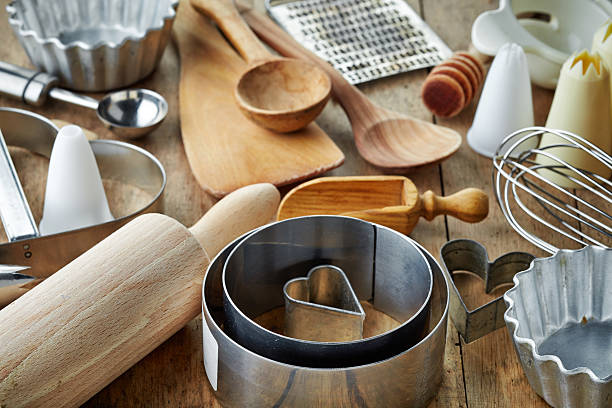
Tip 1: Consider End-User Requirements
High-end consumers often prioritize durability, safety, and aesthetics. Budget-conscious buyers may focus on cost and colorful designs. Understanding your audience helps align material choice with market expectations.
Tip 2: Balance Functionality and Safety
For commercial kitchens, stainless steel or heat-resistant silicone is ideal. For home cooks using non-stick cookware, wooden or silicone tools prevent scratches and ensure safer cooking.
Tip 3: Verify Material Standards
Always check certifications like FDA, LFGB, or EU food contact compliance. For metals, confirm grade and composition. For silicone, ensure it is pure food-grade, free from fillers that may reduce heat resistance.
Tip 4: Test Practicality
Even if a material looks good, it must feel right and perform effectively. Consider weight, balance, handle design, and flexibility. User-friendly utensils increase satisfaction and reduce complaints.
Tip 5: Factor in Cost and Production Feasibility
Certain materials require specialized equipment or finishing. Stainless steel may need stamping and polishing, while silicone requires high-quality molds. Evaluate production costs, labor, and supplier reliability before committing.
Tip 6: Plan for Longevity and Maintenance
Consumers appreciate utensils that last and are easy to maintain. Wooden utensils need occasional oiling; plastics may need frequent replacement; silicone and stainless steel often offer long-term durability with minimal care.
Tip 7: Combine Materials Strategically
Many modern utensils combine materials to maximize performance. For example, a stainless steel spatula with a silicone head or wooden handle provides strength, heat resistance, and user comfort simultaneously.
Why Choose SPLYGO for Kitchen Utensil Sourcing
Expert Supplier Management for Reliable Quality
Splygo Sourcing Company handles supplier management with care, making sure every kitchen utensil comes from a trustworthy source. By checking factories and ensuring they follow strict standards, SPLYGO helps buyers get safe and durable utensils made with the best kitchen utensil material.
Product Development That Meets Market Demands
With strong product development skills, SPLYGO helps brands create kitchen utensils that fit global trends. From eco-friendly materials of kitchen utensils to smart, practical designs, their team works closely with factories to turn ideas into high-quality products that customers love.
The Custom Packaging and Timely Delivery
SPLYGO also manages the custom packaging to give each utensil a professional and attractive look. Whether it’s eco-friendly boxes or creative labels, the packaging and labeling services add more value while keeping the products safe. Combined with efficient shipping, buyers can count on their orders to arrive on time and in top condition.
Final Thoughts
Imagine whipping up your favorite meal with utensils that just feel right in your hand. Choosing the best kitchen utensil material makes every stir, flip, and serve easier and safer.
And for those bringing kitchen tools to the market, having a partner like SPLYGO changes everything. From supplier management to product development and custom packaging, they help turn your ideas into real products that reach customers smoothly and reliably.
FAQs
1. What material is safest for kitchen utensils?
Stainless steel and food-grade silicone are generally the safest options. They resist heat, do not react with food, and meet international food safety standards.
2. Which material lasts the longest?
High-quality stainless steel utensils can last decades, while silicone can last 5–10 years. Wood and plastic typically have shorter lifespans depending on care and usage.
3. Can I use wooden utensils on non-stick pans?
Yes, wooden utensils are ideal for non-stick cookware because they prevent scratches while still providing good control during cooking.
4. Are plastic utensils safe for high-heat cooking?
Only high-quality, heat-resistant plastics are safe for moderate heat (up to ~200°C). Avoid using low-grade plastics near hot cookware to prevent melting or chemical release.
5. How do I maintain silicone and wooden utensils?
Silicone can be washed in the dishwashers. Wooden utensils require hand washing and occasional oiling to prevent cracking or warping.



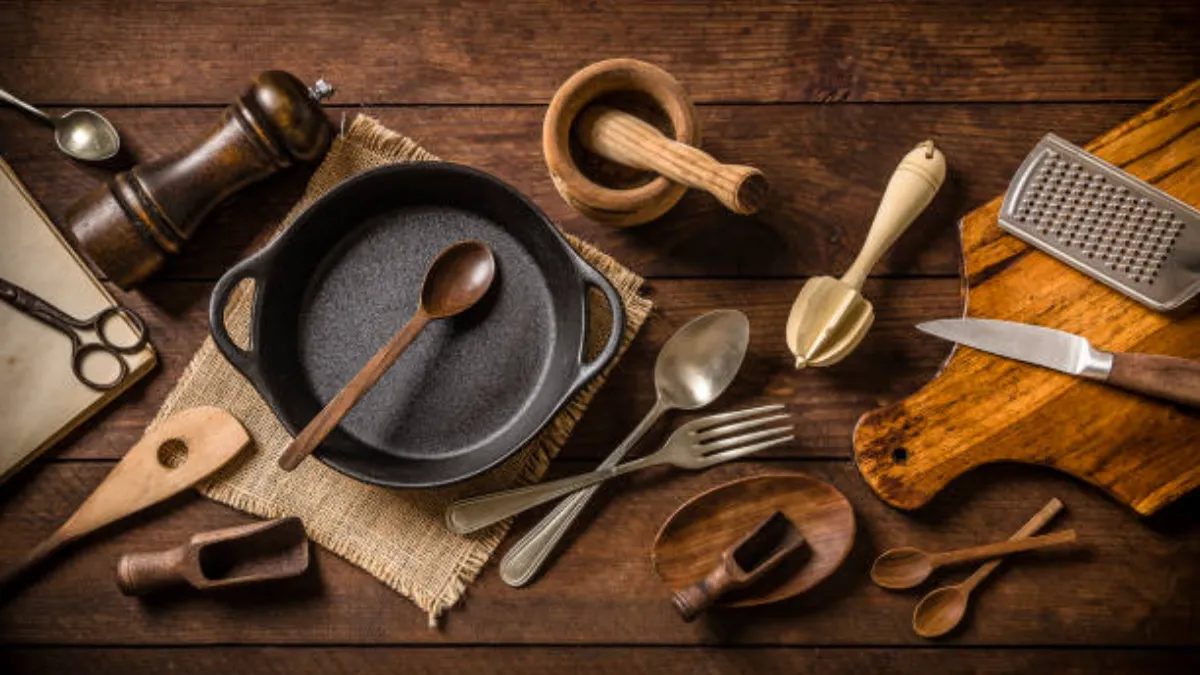



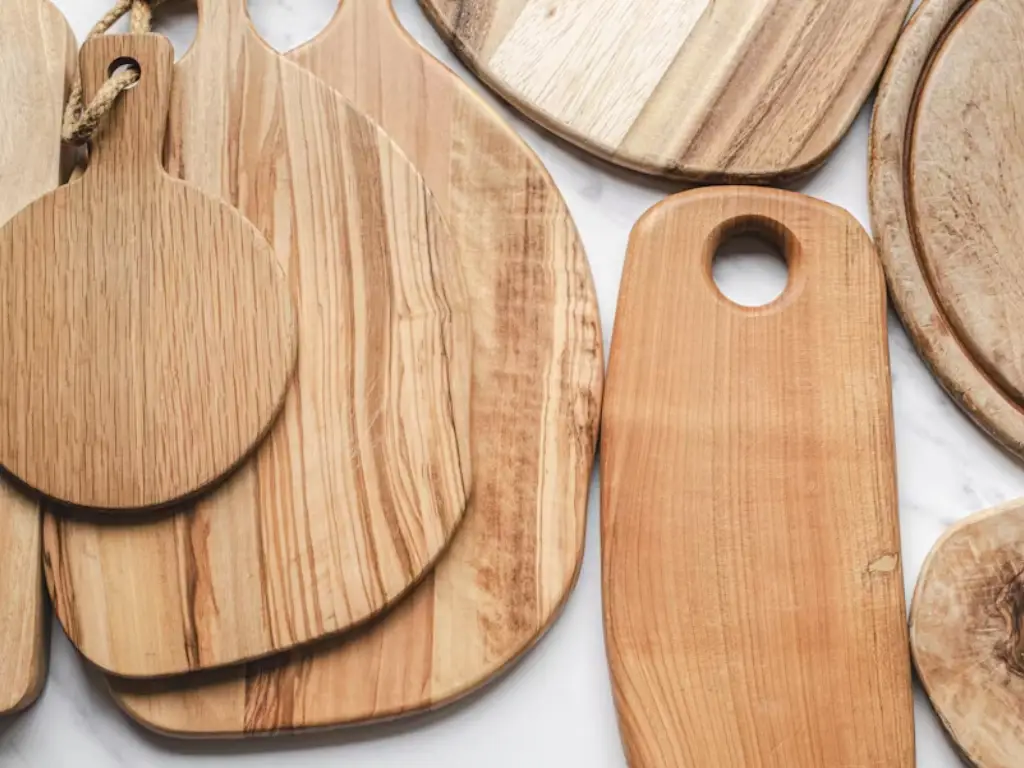












Contact Splygo for Your Needs
Ready to experience our more services? Contact us today to discuss your requirements and find the right solution for your needs.